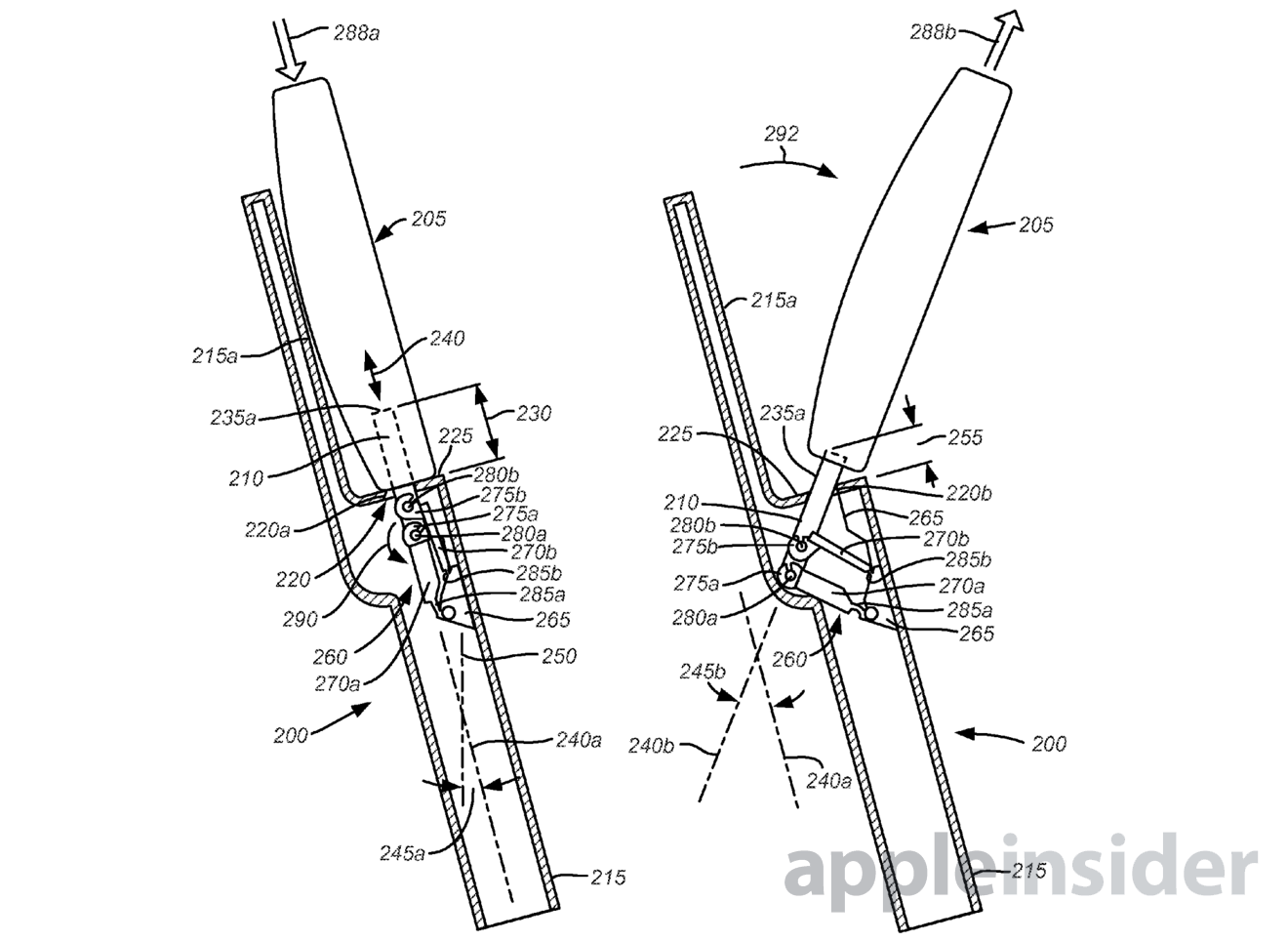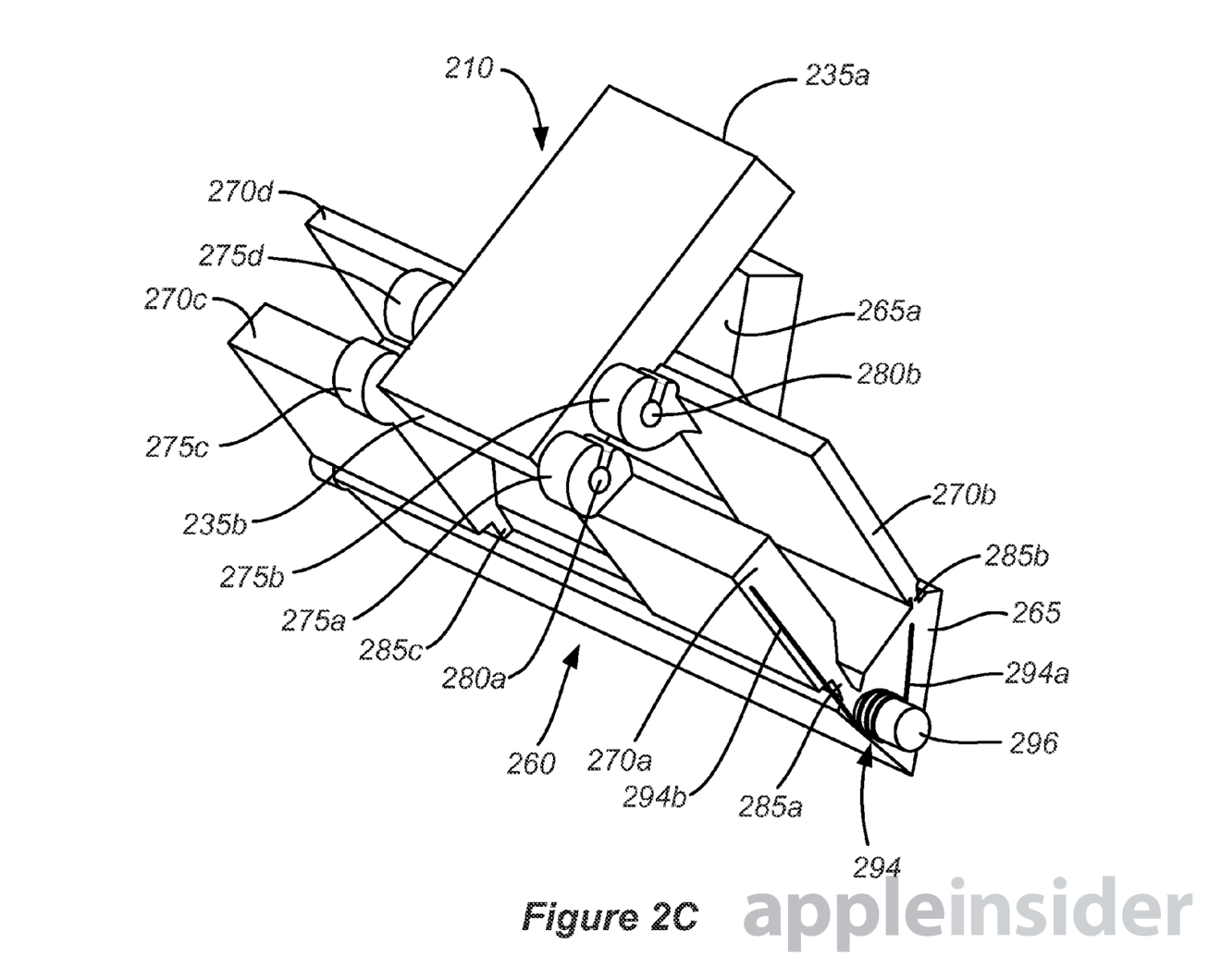Future Apple docks could feature self retracting connectors to prevent breakage
Last updated
Apple has shown interest in building a docking station for devices like the iPhone and iPad that would retract the connector when the "iDevice" is being removed, preventing damage to both the dock and the device.
The concept was detailed in a new patent application published Thursday by the U.S. Patent and Trademark Office, and discovered by AppleInsider. Entitled "Self-Retracting Connector for Docking Device," the filing describes a docking station with a plug connector that could "rotate and retract into or extend out of an opening of the dock station housing."
By retracting the connector into a hidden cavity as a device is pulled forward and off of the dock, Apple says this new dock design could reduce the likelihood of the accessory breaking through accidents or misuse.
Similarly, the dock could work the opposite way: In another proposed fashion, the plug connector could actually extend out from the dock, which could make it easier for users to correctly place the plug into the device's port for charging.
The filing notes that while docks typically have a connector rising out from the base, those connectors can be weak points on the accessory. This is especially true when the device being charged is something larger, like an iPad, placing weight on the weak point of the dock.
If a user pulls their iPhone or iPad off a dock in an improper direction, this can cause the connector to snap and become ruined. Doing so could also damage or even ruin the more expensive device being charged.
In the patent application, Apple states that although some docks include rotating connectors that help prevent breakage, those docks often include "large, unsightly" openings or other aesthetically displeasing features. Apple believes it could improve on these existing connectors, both in terms of convenience for users and manufacturability for itself.
Apple's solution is to have a plug on a dock that would move to "absorb undesirable forces." It gives the example of a portable device, such as an iPhone, being pulled forward, applying a torque to the plug, allowing it to not only bend forward, but also retract into or extend out of an opening on the docking station.
By doing this, Apple could not only help prevent breakage from potential strain on the connector, but could also help protect the port on the portable device.
Apple's concept includes a "biasing element" within the plug that would return it to its original position after rotating and retracting. This natural state for the plug would be in such a manner that it would hold an iPhone or iPad safely on the dock, without placing undue strain on the plug or port. Conversely, the plug could also remain resting forward and extended until a device is placed on it, and the natural weight of the "iDevice" would push the plug connector back and allow the device to rest securely.
As for aesthetics, Apple says that its design would have an opening on the dock only slightly larger than the plug connector that would retract into it. This would prevent "unsightly gaps" on the dock, allowing for a simple and pleasant looking accessory.
The proposed patent, made public this week by the USPTO, was filed by Apple in October of 2012. The filing is credited to inventor Craig Stanley.
 Neil Hughes
Neil Hughes















 Amber Neely
Amber Neely
 Thomas Sibilly
Thomas Sibilly
 AppleInsider Staff
AppleInsider Staff
 William Gallagher
William Gallagher
 Malcolm Owen
Malcolm Owen
 Christine McKee
Christine McKee









7 Comments
... looks "like a one-eyed cat peeping' in a seafood store"
Looks to me like Apple just patented the hinge. Pretty silly, IMO.
... looks "like a one-eyed cat peeping' in a seafood store"
Is this the gentile version of the dock (as opposed to the Jewish ¡)?
I would love to see the same Magnet system we have on MacBook to be adapt to iOS device.
Why and how? iOS devices don’t have the weight to justify MagSafe. Either they’ll be dragged along with the cable anyway or the magnet won’t be strong enough to make it worth using to keep the connector in.